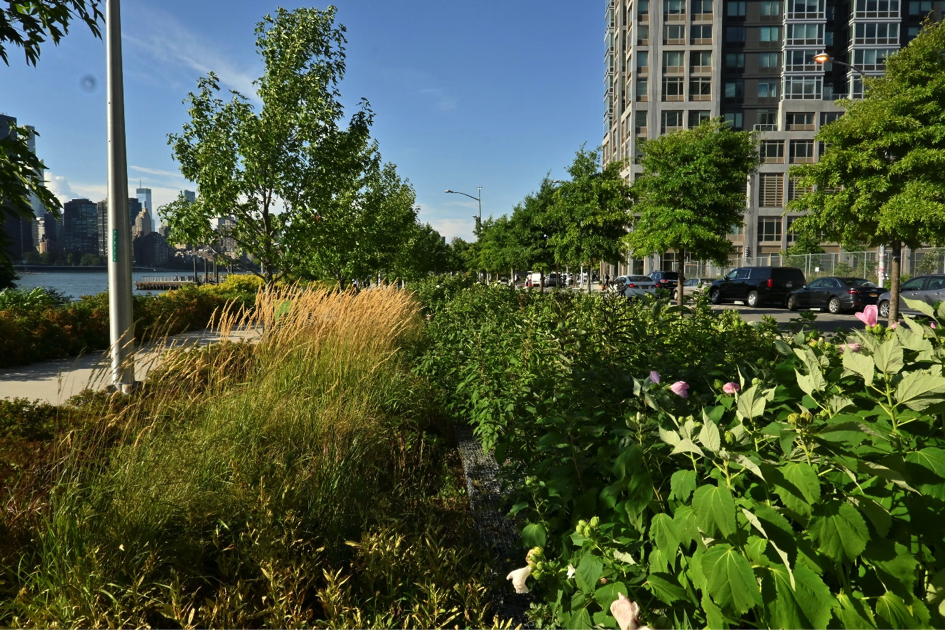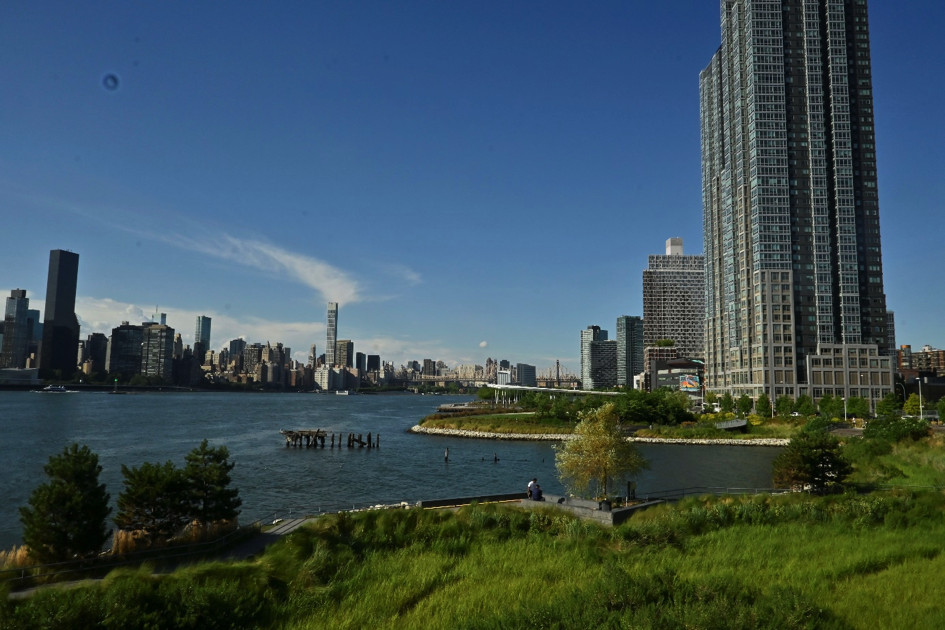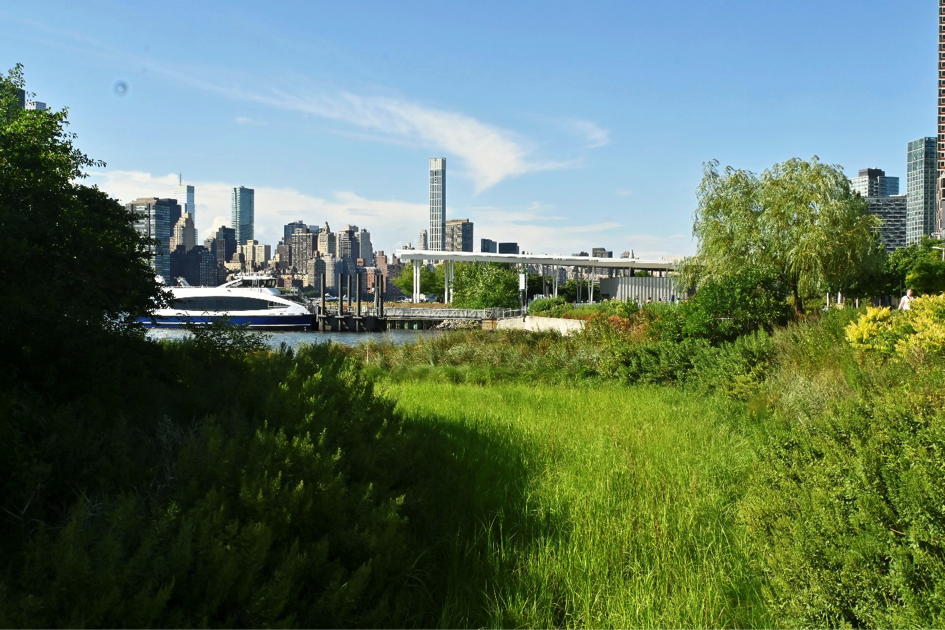Description: A city park that is part of the transformation of the post-industrial coast of Long Island City. In 1925, massive cranes were built here to handle goods from ships and barges to railway depots.
Process: Revitalization of post-industrial, preservation of post-industrial heritage through restoration of parts of historic engineering structures (overhead cranes used for cargo handling, railway tracks).
Community: This waterfront development project has contributed to gentrification and displacement of the local community, and numerous office spaces have been developed here.
NBS tools used: Two hundred years ago, this space was occupied by wetlands – the redesigned park aimed to renew the post-industrial space, protect this rapidly developing urban space from the effects of rising river levels, the effects of hurricanes and the enclosure of wetland ecosystems. One of the green spaces in the park is also a flood control element, as it is a dry retention basin. Paths were built between the park line and the apartment blocks, with long, narrow bioswales between them. As a result, polluted rainwater – runoff from bike paths, sidewalks and streets – is treated and allowed to seep freely into the ground.
Developed by the University of Warsaw – research (August 2022 New York).





